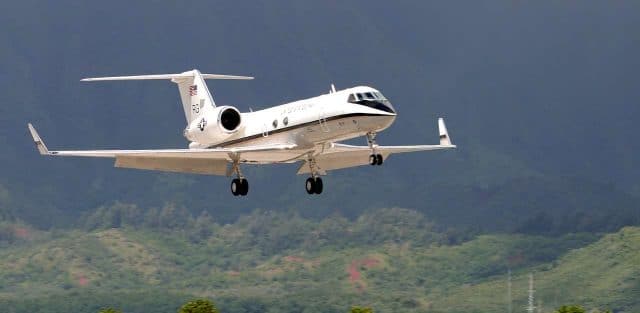Approach Speed

Approach speed is the recommended speed at which an aircraft should approach a runway for safe landing. There are a number of factors that will affect the speed at which a chartered flight can safely approach a runway, including:
- Type of aircraft
- Flap configuration
- Weight of aircraft
- Wind direction
The recommended final approach speed, also known as the reference landing approach speed (Vref, for short), is different for every aircraft. This figure is defined in the aircraft operating manual.
Finding the Right Balance
Essentially, a chartered flight needs to retain enough velocity to keep the engines from stalling. Yet, it also needs to be slow enough that the pilot can safely maneuver the plane towards the runway and stop in the allotted distance. As mentioned, the weight of an aircraft plays a significant role in approach speed. The heavier an aircraft is, the harder it is for the wing to keep it aloft while landing. To compensate for this, the approach speed increases. However, because you have a heavier plane travelling at a greater velocity when it touches down on the runway, it requires a combination of greater stopping power and/or longer runway distance to bring it to a stop. Furthermore, if there are tailwinds or gusting winds, pilots will use airspeed corrections to compensate for these conditions. Shortly before a chartered flight touches down on the runway, the pilot will further reduce the aircraft’s speed by gently raising its nose. This is known as flaring.
Approach speed is the recommended speed at which an aircraft should approach a runway for safe landing. There are a number of factors that will affect the speed at which a chartered flight can safely approach a runway, including:
- Type of aircraft
- Flap configuration
- Weight of aircraft
- Wind direction
The recommended final approach speed, also known as the reference landing approach speed (Vref, for short), is different for every aircraft. This figure is defined in the aircraft operating manual.
Finding the Right Balance
Essentially, a chartered flight needs to retain enough velocity to keep the engines from stalling. Yet, it also needs to be slow enough that the pilot can safely maneuver the plane towards the runway and stop in the allotted distance. As mentioned, the weight of an aircraft plays a significant role in approach speed. The heavier an aircraft is, the harder it is for the wing to keep it aloft while landing. To compensate for this, the approach speed increases. However, because you have a heavier plane travelling at a greater velocity when it touches down on the runway, it requires a combination of greater stopping power and/or longer runway distance to bring it to a stop. Furthermore, if there are tailwinds or gusting winds, pilots will use airspeed corrections to compensate for these conditions. Shortly before a chartered flight touches down on the runway, the pilot will further reduce the aircraft’s speed by gently raising its nose. This is known as flaring.








